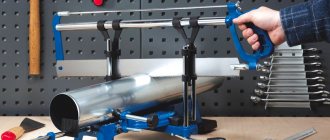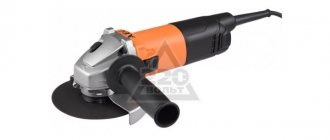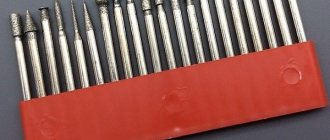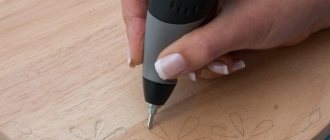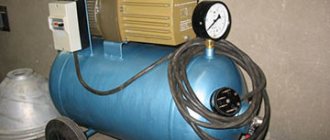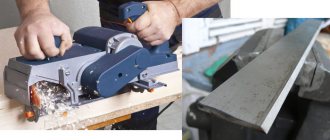Quite often, do-it-yourself apartment renovation involves processing wood in such a way as to give the workpieces figured cuts and surfaces with a beautiful relief shape.
They are created with a special tool with thin files called a jigsaw.
Our tips will help the home craftsman choose and buy an electric or regular manual jigsaw for carpentry work, furniture making, and understand the principles of operation of its various systems.
It is convenient to use an electrified tool to create smooth cuts in a straight line in the longitudinal or transverse direction with a straight or oblique angle.
A modern jigsaw ranks second in a craftsman’s arsenal of tools, second in popularity only to a hammer drill, which is used to process hard building materials.
The principle of operation and design of a jigsaw
An electric jigsaw consists of a small number of components and parts, but most of them require high precision manufacturing and assembly. The main working part of the device is the file. It is attached to a rod that moves up and down with an adjustable frequency and is located at the front of the device. The rod is driven by an electric motor through a gearbox and a crank mechanism. To increase cutting speed, many devices have a pendulum function added: the blade moves not only down and up, but also back and forth. A work area illumination and a laser sight are placed near the attachment point. The pendulum stroke regulator is located on the side of the body. The device rests on the workpiece with a flat platform; in many devices, this platform can be rotated around the longitudinal axis at a fixed or arbitrary angle. On the back side of the platform there is a pipe for connecting a construction vacuum cleaner and removing sawdust from the work area.
At the top there is a handle in the shape of a bracket or a mushroom; on it there is a regulator of the engine speed and a switch.
Jigsaw and methods of its use
There are several methods for using an electric jigsaw. In everyday life, straight and curved cuts are most often used. In the case of a direct cut, the device is brought to the beginning of the line and the beginning of the platform is supported on a securely fastened board or sheet. The pointer on the edge of the platform or laser marker is aligned with the marking line. The jigsaw is turned on at the lowest speed to mark the beginning of the cut, then the cut is slowly carried out until the platform is completely resting on the part. Now you can turn up the speed.
Curvilinear cut: a hole is drilled inside the marked contour. A special file for curved cutting is attached to the chuck of an electric jigsaw, the pendulum mechanism is turned off, it is inserted into the hole until the platform is in full contact with the part, and they begin to saw at low speed. Bring the cutting line to the intended contour tangentially at a slight angle and make a working cut.
Sawing technology
Preparation
When we cut out plywood with a jigsaw, the quality of the finished product largely depends on how responsibly we approached the preparation process.
To avoid incidents during work, you need to spend just a few minutes:
- We inspect the plywood intended for work for damage and peeling of the veneer.
- We check the quality of drying by making a test cut.
- We attach the template printed on the printer to the plywood and secure it with tape or push pins.
- Simple shapes can be transferred to plywood by piercing, leaving awl marks on the material.
Copying the drawing
For clarity, we paint over with a pencil those places on the workpiece that must be removed after cutting. It is better to do this immediately after translating the template, since it will be more difficult to understand the interweaving of lines later.
Basic Operations
So, the preparation is complete, and you can begin your first attempts to cut something out of plywood with your own hands. Of course, if you have never picked up a jigsaw before, then it is worth practicing on simple products before starting a large-scale project. Furniture work using a jigsaw
The work begins with cutting out the outline of the workpiece, after which internal cuts are made. To make a through hole, first drill the plywood with a drill, and only then insert the jigsaw blade.
Below we will describe the sequence of performing basic operations using a hand jigsaw. Using an electric or band saw has its own nuances, but once you master the basics, you will not have any difficulties when working with more advanced equipment. Straight cut
The simplest operation is cutting in a straight line.
The instructions for this operation are as follows:
- We insert the jigsaw file into the drilled hole so that the teeth are directed towards the handle.
- We stretch the canvas so that it does not vibrate during operation, and fix it with a screw.
- We place the workpiece on the workbench, press it with our left hand to the sawing table and gradually begin to saw through.
- When cutting a straight line, move the jigsaw up and down, gradually feeding the workpiece under the saw.
- Control of the straightness of the cut can be ensured by placing a guide bar on the workbench.
Tool position when cutting
Figure cutting is more complex, and you should start it only when you have fully mastered straight cutting:
- We fix the jigsaw file in the same way as in the previous case.
- We lay the workpiece with a clearly drawn line on the workbench.
- We saw from top to bottom, feeding the plywood with our left hand so that the blade does not go beyond the line.
- When the file moves in relation to the template line, we stop moving with our left hand until the file begins to move freely. After this, we adjust the position of the plywood and continue working.
All elements are cut out using this principle, including obtuse corners. But you shouldn’t cut out an acute angle by turning the workpiece, since there is a high risk of the final fragment breaking off. In this case, two slits should be made, connecting them at the top of the corner. We process the edge of the workpiece with a file
After cutting out all the elements, the workpiece must be processed with a file, since even the most careful work does not allow making a product with perfectly smooth edges. Using wood files, we carefully polish the outer and inner cutting lines, after which we process the entire workpiece with sandpaper and sandpaper.
The final stage is finishing the product. Plywood can be stained, painted or varnished.
Safety precautions
Sawing from plywood is not a hazardous activity, but safety rules must still be followed:
- Only proper tools should be used for the job.
- It is prohibited to cut using blade fragments or band saw fragments.
- When working with power tools, you should check the quality of the insulation to avoid electric shock.
Eyes and hands must be protected
- Sawing with a jigsaw or band saw is carried out only on a special workbench, and the cutting part of the tool must be limited by special devices (frames, shields, etc.).
- When performing work, you must use personal protective equipment: goggles, gloves, dust mask or respirator.
Main types of jigsaws
When choosing a model, you first need to decide on the class of the device. Based on the type of power supply, electric jigsaws are divided into mains and battery-powered. Cordless ones do not depend on wires and are convenient where you need to make a lot of cuts in places at a construction site that are spaced apart from each other. Their power decreases as the battery discharges. Mains ones require sockets and extension cords, but are much lighter, do not require breaks to change and charge batteries, and have constant power that does not depend on the duration of operation. According to their purpose, electric jigsaws are divided into household and professional.
Household
The motor power in household appliances rarely exceeds 500 watts; their performance, continuous operation time and overall resource are limited. They are suitable for small volumes of work and can cut wooden parts up to 80 mm thick, as well as metal up to 4 mm. Continuous operation time rarely exceeds half an hour.
Household jigsaw
Advantages:
- Low price.
- Low weight.
- Rich choice.
Flaws:
- Small resource.
- Short time of continuous operation.
- Small thicknesses of sawn parts.
- Few optional accessories and functions.
Professional
Professional models have more powerful motors - from 750 to 1500 watts, this makes it possible to handle wooden workpieces up to 130 mm, steel up to 10 mm and aluminum up to 20 mm. Daily operating time is from 8 to 16 hours, continuous operating time is up to 3 hours. Advantages:
- High performance.
- Wide functionality.
- Increased resource.
- A large number of additional functions and devices. Disadvantages Increased weight and dimensions.
- High price.
Professional jigsaw
Chinese semi-professional devices try to combine the advantages of household and professional devices, but this often comes at the expense of quality.
Selection of canvas
The versatility of such a working tool as a jigsaw is primarily due to the ability to replace the blade. By replacing only one element of the tool, you can get a design designed to process a completely different material. There are several main directions in which such fabrics are produced:
- for metal;
- for wood
- mixed type.
Typically, for metal processing, blades with a large number of teeth per unit length are used (the so-called TPI index - teeth per inch). Mixed teeth have a rather complex shape.
There are other features of the teeth in the blade. Ground and set teeth are designed for high cutting speeds and large vibrations, and to ensure a smooth cut, non-set teeth are used. At the same time, the lack of wiring reduces the processing speed. Wavy milled teeth are used only in cases where the cutting requirements are not strict.
The canvases differ in the method of fastening: T-shaped and U-shaped.
They also have special colored markers on the shank:
- white – processing of wood and metal surfaces;
- gray - jigsaw for wood (exclusively);
- red - plastic;
- blue - only for metal surfaces;
- black - special for different materials.
The marking also indicates the length of the blade:
- 1 - up to 75 mm;
- 2 - up to 90 mm;
- 3 - up to 150 mm;
- 7 - 150 mm and above.
The size of the teeth is indicated by the letters ABCD - from largest to smallest.
Other markings:
- F - for bimetallic sheet;
- O - for cutting curved lines;
- R - reverse tooth (requires securing the part);
- P - thicker blade, which allows better cutting at an angle;
- X - universal blade;
- HM - reinforced steel.
Markings may differ from one manufacturer to another, but the characteristics indicated are usually the same as those indicated above.
Thus, you can choose the right blade or blades for the job based on the markings alone, and if you have a unit of sufficient power, you can process any surface.
Characteristics and design features
Characteristics of an electric jigsaw that must be taken into account in order to choose the right model:
- The engine power affects both the maximum thickness of the workpiece processed and the frequency of the rod stroke.
- The frequency of the working stroke determines the productivity and maximum cutting speed
- Cutting depth is the maximum thickness that the device can handle, depending on the material.
- Power type: battery or mains.
- Continuous operation time - how many minutes or hours the device can work without interruption.
- Availability of additional functions.
Jigsaw power
The functionality and performance of the entire device directly depend on its heart - the electric motor. Power determines the force with which the blade will move. For example, an electric jigsaw with a power of 400 W. will be able to handle 60 mm of wood and 4 mm of metal, and a 600-watt one will be able to handle 80-85 mm of wood and 6-8 mm of metal. Power varies from 300 to 1000 watts. For a home craftsman, it would be wise to choose among devices with an average value of 500-600 W. Weak devices are useful only for a narrow range of tasks, while more powerful, professional ones are too heavy and expensive, and also consume a lot of electricity.
Blade movement frequency
The stroke frequency directly determines the speed of movement of the saw - the more often it moves up and down, the faster it will cut the material. For different models, the maximum frequency lies in the range of 2300-3200 strokes per minute, and the most powerful models, the frequency of the rod movement reaches 4000 per minute. Most modern models allow you to adjust the stroke frequency: stepwise using a separate regulator or smoothly as you press the power button harder.
The second option is better suited if the master is going to do sawing or shaped cutting of material. Frequency control makes it possible to work with various workpiece materials, so for wood the frequency should be maximum, for a more even cut surface, and for metals, on the contrary, low, in order to avoid overheating of the saw and its breakage.
Another important parameter is the cutting depth
Cutting depth is a key characteristic of an electric jigsaw. It determines what maximum thickness of the workpiece the device can handle, provided that a blade of the appropriate length is installed in it. By the way, if you use a 100 mm saw to saw a beam 100 mm thick, the end of the cut may turn out sloppy, with burrs. It is better to have a length reserve of 5-10 mm. The depth depends on the material and is indicated separately for wood and steel. Aluminum blanks, as a rule, can be cut one and a half times thicker than steel ones. For household models, the depth is 50-110 mm for wood and 4-6 mm for iron. For professional ones - 150 and 10 mm, respectively
Saw blade sizes
Saw accessories for jigsaws are characterized by three sizes: length, width and thickness. When choosing a nail file, you should understand what tasks you are buying it for. At the same time, it is necessary to take into account the capabilities of the tool itself; carefully read the technical characteristics of the jigsaw, look at the maximum dimensions of the blades with which this or that model can be used.
File length. According to this parameter, files vary in a fairly wide range: from 40 to 250 millimeters. However, most models of household and semi-professional jigsaws are equipped with saw blades up to 150 millimeters long. In fact, the depth of the cut depends not so much on the length of the file, but on the capabilities of the jigsaw itself. At the same time, for sawing thin parts, we recommend using short blades, this way you can avoid the blade moving away from the markings and guarantee high cutting accuracy.
Blade width. The selection of a blade based on this parameter depends on the tasks that you are going to solve using a jigsaw and on the capabilities of a particular model. The narrower the file, the easier it is to make curved and shaped cuts, the higher the quality of the curved cut. On the contrary, a wide blade guarantees high accuracy and cleanliness of cutting when making a straight cut.
File thickness. Here you need to be especially careful - many quick-release chucks have restrictions on the thickness of the file. As for the characteristics themselves, it is worth noting that the thickness of the file directly affects the accuracy and cleanliness of the cut: the thicker the file, the more accurate and cleaner the cut.
Additional functions
To choose an electric jigsaw that has all the functions you need, but is not overloaded at your expense with unnecessary bells and whistles, you need to understand these functions.
Pendulum stroke
Currently, the pendulum stroke has become an attribute of even the most budget models. When this option is enabled, the blade begins to move not only up and down, but also back and forth. This speeds up cutting, but at the same time reduces the quality of the surface. The length of the pendulum stroke is adjusted by a switch located on the side wall of the device. It makes sense to enable the option for large volumes of sawing and disable it when performing a curved cut or one that requires special precision and quality of the cut surface.
Sole angle
If your budget allows, then it is better to choose a model that has this function. By turning the sole at a certain angle around the longitudinal axis, you can make a cut at an angle of 30, 45, 60 degrees. In professional models, these positions are not fixed, and the angle can be changed smoothly, focusing on the protractor.
Jigsaw with pendulum stroke and variable angle of inclination of the sole
On inexpensive models, the sole is fastened with a hex key, on more expensive ones - in a quick way, using a special clamping lever.
Smooth start
For a novice master who does not yet have much experience, it is better to choose a model that has the ability to start softly. It allows you to start cutting at minimum speed, gradually increasing it. This will allow you to accurately start the cut along the intended line, eliminating the blade falling off or moving to the side.
Maintaining speed under load
It is worth choosing an electric jigsaw with this function if you plan to do a large amount of work with hard wood or metal. The function protects the engine from overload by stabilizing the speed using an electronic circuit.
Chip blowing
This option should definitely be chosen by those who intend to do sawing. The chip blower system, using the air flow from the engine cooler fan, blows sawdust away from the work area, providing good visibility.
Backlight
Illumination of the work area will be very useful in low light conditions and in cramped conditions.
Laser pointer
It is reasonable to choose a device with a laser pointer when a large number of straight cuts are required.
This option allows you to save time on marking by marking only the start and end points of the cut on the workpiece, and guide the electric jigsaw along a laser-illuminated straight line.
Frequent malfunctions
For a conventional four-stroke, four-cylinder automobile engine, an inductive sensor is used. Before troubleshooting a jigsaw, you will need to arm yourself with instruments such as a multimeter and a probe. This will make it even more straightforward. If we consider devices with control units, then the model will require a controller.
One of the main ones is the not so high accuracy of cutting samples if you work manually. Models with legs If necessary, you can make this jigsaw machine with your own hands.
The convenient thing is that, upon request, the machine, made in a short time, can quickly be disassembled, and you can use a manual jigsaw again.
Such a device can easily cope with the processing of small workpieces, the thickness of which does not exceed 30 mm. This type of damage can be eliminated by disassembling the button and cleaning the contact.
If the cut needs to be made at an angle, the support sole is shifted by the required number of degrees.
The design of electric jigsaws and their malfunctions The design of jigsaws from different companies differs little. There are models that operate from portable chargers. How to use a jigsaw correctly
How to choose the right electric jigsaw
To choose the right jigsaw, you need to analyze all its characteristics together.
Speed adjustment as an aspect when choosing
The number of revolutions, which determines the stroke frequency of the rod, is set depending on the material of the workpiece. So, for wood you should choose the maximum number of revolutions in order to get an even and neat cut. For plastic and metal, on the contrary, it is minimal to avoid overheating of the blade and material, respectively.
Carving with an electric jigsaw
Adjusting the pendulum stroke
You should choose a model with a pendulum stroke if you have a large number of straight cuts to make. The pendulum stroke, or additionally the oscillation of the blade back and forth with a small amplitude, can significantly increase the cutting speed, while reducing the quality of the surface. True, it is now difficult to find a model without a pendulum stroke.
Replacing the file
The method of replacing the blade greatly influences the ease of working with an electric jigsaw, and if a large volume of various cuts is planned with frequent changes of material and cutting method, it directly affects productivity. For common European-style cartridges and saws with a cross-shaped file head, there are two ways to change the file:
- Screw clamp - the file is fixed in the chuck with a hexagon screw.
- Quick-release clamp - the file is fixed using a special lever that is pressed with your finger. Changing the blade occurs in a couple of seconds.
Cutting the workpiece at an angle; sole rotation function
Adjusting the angle of the sole also allows for two methods of fixation - with a hexagon screw or in a keyless way by pressing the lever.
The keyless method is much faster and more convenient, but requires careful checking of the quality of fixation in the selected position to avoid play and rattling during operation.
Replacing the saw holder
Replacing some types of fasteners is much easier than finding these parts. To perform a similar operation with block and screw clamps, you do not even need to unscrew the tool body. Saw holders of this type are attached to the end of the rod using one or two screws, which makes it quite convenient to change them. In the case of some screw fasteners, replacement will require removing the rod to more conveniently and securely fix the holder.
The video below about repairing a jigsaw with your own hands clearly demonstrates the process of replacing the shoe-type fastening.
If things are relatively simple with simple saw holders, then replacing a quick-clamping one can cause some difficulties, especially for an inexperienced craftsman. Let's start with the fact that these types of fastenings, according to the location of the levers, are divided into radial, lateral and frontal. The first type is the most common and spare parts for its repair can be found, but the last 2 are unique, which can be ordered directly from the manufacturer. In the case of a radial type of fastening, you can purchase a repair kit and try to sort it out yourself, but it would be best to buy it assembled, along with the rod.
How to choose an electric jigsaw with additional functions
There are several additional features that make the purchase more expensive, but certainly make it easier to interact with an electric jigsaw. Before choosing, the buyer should decide whether increased convenience is worth that kind of money in each specific case or not. These include:
- Vacuum cleaner connection (you should at least have a construction vacuum cleaner).
- Laser pointer (very helpful when making large volumes of straight cuts).
- Parallel guide (allows you to save on markings when cutting sheet materials).
- Circular guide (allows you to cut out perfect circles without marking).
In addition to convenience, the reason for choosing an electric jigsaw with one or another addition can be the large volume of work for which this addition is intended.
Purpose
Apartment renovation involves the use of sheet materials: plywood, laminate, plasterboard, fiberboard, MDF. Behind their inner surface, voids often form, which are used for laying electrical wiring and installing lamps, switches and sockets at different heights.
Cutting such sheets with a jigsaw file turns out smooth and is done quickly along the marking line. Rounding corners on homemade furniture and creating shaped cutouts without the use of complex cutters and templates are also within the capabilities of the home craftsman using this tool.
Special brands of diamond-coated files allow you to use an electric jigsaw to make shaped cuts on ceramic tiles while laying them on the floor or walls.
Beautiful openwork designs and patterns of various shapes from building materials can be easily made with a hand jigsaw.
Wood carving will give them additional reliefs and a decorative look.
A simple jigsaw, thanks to the availability of different types of files on sale, allows you to process parts not only from wood, but sheet metal and plastics.
By type of handle design
The consumer can choose between the two most common forms of handles:
- Staple-shaped. The convenient bracket-shaped handle is more widespread; it allows you to hold the electric jigsaw with one hand and control its position and direction of the cut.
- Mushroom-shaped, preferable for curved cutting and cutting inclined sheets and boards. You will have to hold the device with both hands.
Electric jigsaw with staple handle
Which jigsaw is better to choose, professional or household?
To answer the question: which jigsaw to choose, household or professional, the consumer should first of all evaluate:
- Scope of upcoming work.
- Their nomenclature.
- Materials.
- Affordable budget.
Household unit
It makes sense to choose a household appliance if there is a small amount of simple work to be done in a home workshop with a material of small thickness, for example, making a cabinet or shelf. A jigsaw for the home will not have a long service life and many additional functions, but it will be light, affordable and will not end up as a dead weight on the shelf.
Industrial
Industrial-grade devices are heavier, power-hungry, and bulkier. High performance, long service life and a large number of additional functions make them several times more expensive than household ones.
Stationary industrial jigsaw
Choosing such a device will make sense in case of commercial use or when building a large house with your own hands.
Power of household and industrial hand tools
The power of a household-grade device is from 300 to 700 watts, while industrial designs have a power of 500 to 1000 watts. It should be remembered that when cutting 1 linear meter, an industrial device will consume more electrical energy, in proportion to its superiority in power.
What actually affects the power of an electric jigsaw?
Engine power affects several parameters:
- The frequency of the rod movement and therefore the performance.
- Maximum cutting depth.
- For battery models - for the duration of operation without recharging: the greater the power, the faster the charge will be used up.
For all types of power supply, wattage affects power consumption - the higher the wattage, the higher the bill for the same amount of work.
Tool storage
In order for a tool to serve for a long time and properly, it is important not only to follow the rules of its operation, but also to store it correctly. The best option is to keep the jigsaw in a case from the manufacturer.
This suitcase is convenient both for storing spare parts and for transportation. But the instrument is not always sold with a case. In this case, you need to know that a jigsaw, like any power tool, is afraid of water and excess air humidity. Therefore, it must be stored in a dry, well-ventilated place. A cardboard or wooden box will serve as protection from mechanical damage. If the warehouse is unheated, then in the cold season, before starting work, the tool must “thaw” in a warm room for 20–25 minutes. During this time, the gearbox lubrication will become elastic again.
Standard case for storing and transporting a Makita jigsaw
When using a jigsaw at home, you should not neglect the rules of personal safety. While working, you cannot be distracted, talk on the phone or do other things. To protect your eyes and respiratory system, it is recommended to use a respirator and safety glasses. The use of homemade attachments is justified when they do not pose a health hazard and have successfully passed preliminary tests.
Consumables and contents
The models offered on the market differ greatly in their configuration. Cheap ones, as a rule, only have the electric jigsaw itself and a warranty card. The more expensive ones include a starter set of saws, hex wrenches, a parallel guide and a well-printed user manual. For cordless models, a spare battery will be a big plus - if you buy it separately, it can cost up to half the price of the electric jigsaw itself.
Electric jigsaw complete set
The starter kit also sometimes includes oil for periodic lubrication. Any components and consumables sold as a set increase the price, but are noticeably cheaper than those purchased separately.
The nuances of straight cutting
To cut material in a straight line, a guide rail or rip fence is often used. Such additional devices greatly facilitate the work process and improve the quality of the cut.
Guide rail
This auxiliary device is a metal ruler containing a groove for installing a special sole and a jigsaw.
Before starting work, the material is marked. After that
Initially, the material is marked. After this, a tire is fixed along the line. The electric tool moves easily along the device, making precise and even cuts.
Rip fence
All models of electric jigsaws have a special hole in the support base for installing a special rip fence. The device can be purchased at a specialty store, but is often included with the tool.
The parallel fence ensures even cutting of various workpieces. But the use of such a device requires certain conditions:
- when moving the tool along the canvas, it is necessary to press the sole firmly enough;
- The surface on which the device will move must be absolutely flat.
The structure of the rip fence must be sufficiently strong and robust. Installing the device on devices that can move to the side when cutting is not recommended.


